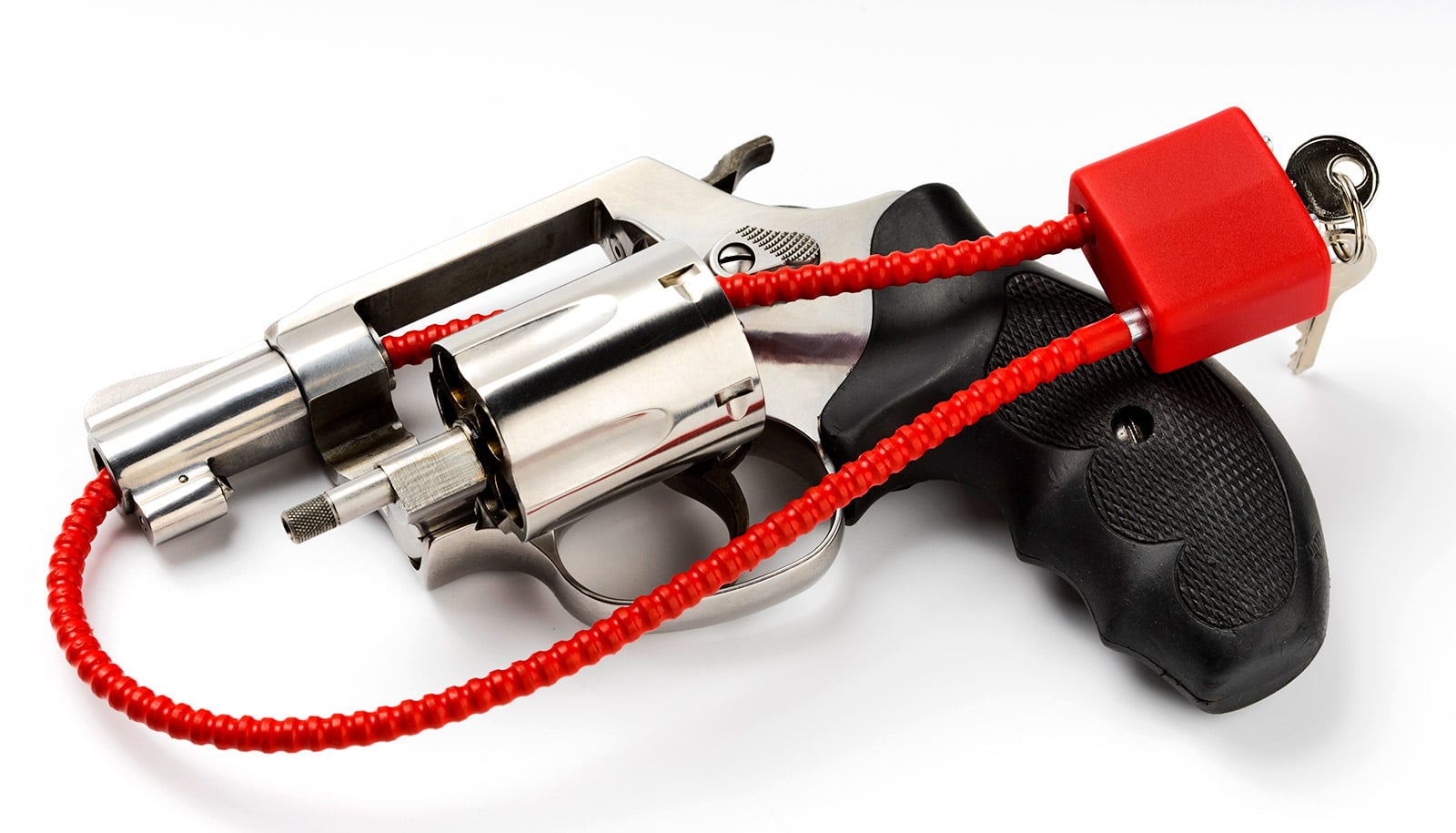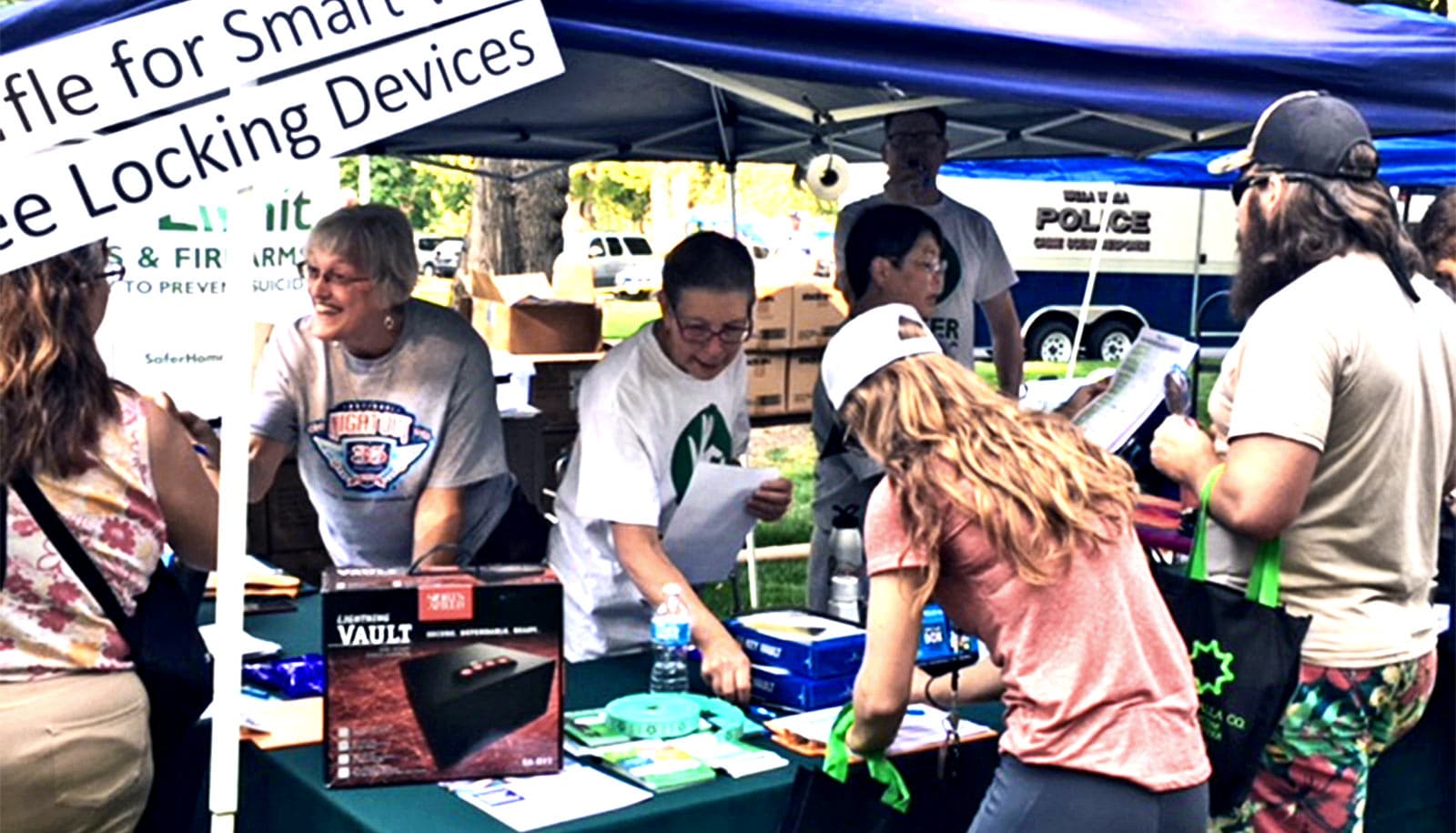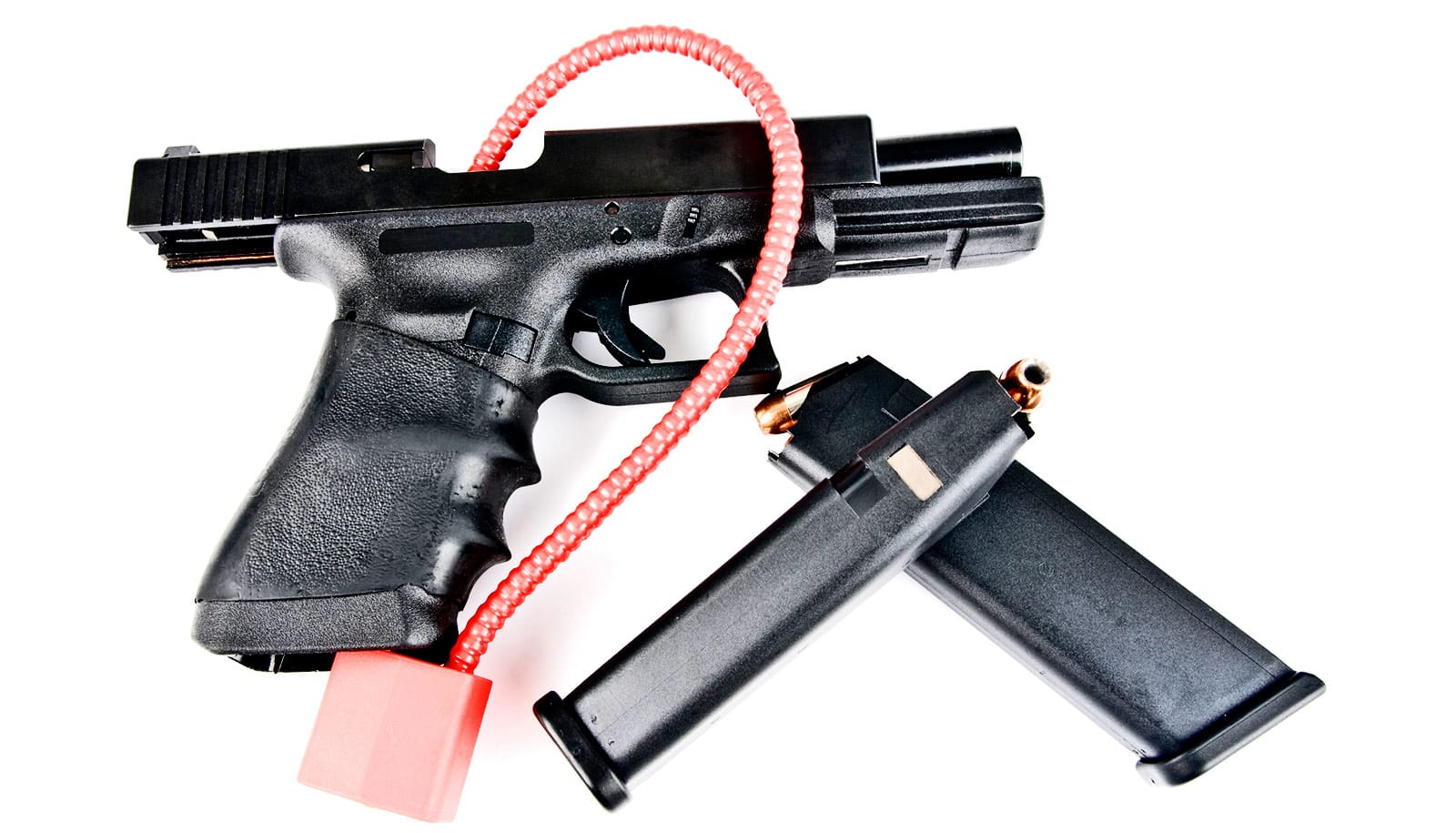More than a third of US households with teens own firearms and more than two-thirds of these owners store at least one gun unlocked and/or loaded, according to a new study.
Surprisingly, the findings also show that prior exposure to violence is not associated with gun owners’ current storage practices.
“These findings are consistent with prior work that has found that owning a firearm for protection (vs. nonprotection motivations) is associated with storing firearms in an easy-to-access manner, that is, unlocked and/or loaded,” says Rebeccah Sokol, an assistant professor of social work at the University of Michigan and lead author of the study in Injury Prevention.
Sokol and colleagues collected data about violence exposure, motivations for firearm ownership, and firearm storage among US caregivers of teens. The study puts a spotlight on responsible gun ownership, which includes owners taking steps to ensure the weapons are stored securely.
The proactive behavior of storing firearms locked and unloaded lessens the risk of someone gaining access to guns who might harm themselves or others—either intentionally or unintentionally, Sokol says.
“We need a shared understanding that responsible firearm ownership involves storing firearms locked and unloaded; there are large benefits for public and personal safety in practicing this type of storage,” says Sokol, a behavioral scientist who is also affiliated with the University of Michigan’s Institute for Firearm Injury Prevention.
“We also need more research to understand why individuals differ in their firearm storage practices and the strategies that effectively promote locked and unloaded firearm storage among all firearm owners.”
The study involved a nationally representative dataset collected in June/July 2020 of nearly 3,000 caregivers—1,095 of whom were firearm owners. Researchers evaluated the associations between the exposures of community violence, interpersonal violence, firearm ownership motivations (protection vs. nonprotection), and the outcome of firearm storage patterns (locked and unloaded vs. unlocked and/or loaded).
The results showed no associations between community or interpersonal violence exposure and gun storage behaviors. In addition, the associations between violence exposures and firearm storage did not vary according to firearm ownership motivations.
Owning a gun for protection was associated with increased odds of storing at least one firearm unlocked and/or loaded, and this association persisted across all strata of violence exposures.
The results suggest the associations between violence exposure and firearm storage are more complicated than anticipated, Sokol says.
For example, it may be that actual violence exposure is not associated with firearm storage behavior. Rather, individuals might experience vicarious violence and fear through social or news media that leads to feeling the need for self-protection, despite living in places or with people where violence is unlikely.
Additional coauthors are from the University of Washington, Temple University, and the University of Michigan.
Source: University of Michigan



